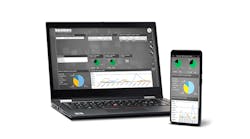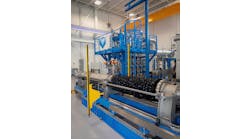Why calibrate?
For process manufacturers, regular calibration of instruments across a manufacturing plant is common practice. In plant areas where instrument accuracy is critical to product quality or safety, calibration every six months – or even more frequently – is not unusual. However, the key final step in any calibration process – documentation – is often neglected or overlooked because of a lack of resources, time constraints or the pressure of everyday activities. Indeed, many manufacturers are now outsourcing all or some of their maintenance activities and so the contractor too is now under the same pressure to calibrate plant instruments quickly but accurately and to ensure that the results are then documented for quality assurance purposes and to provide full traceability.
The purpose of calibration itself is to determine how accurate an instrument or sensor is. Although most instruments are very accurate these days, regulatory bodies often need to know just how inaccurate a particular instrument is and whether it drifts in and out of specified tolerance over time.
What is a documenting calibrator?
A documenting calibrator is a handheld electronic communication device that is capable of calibrating many different process signals such as pressure, temperature and electrical signals, including frequency and pulses, and then automatically documenting the calibration results by transferring them to a fully integrated calibration management system. Some calibrators can read HART, Foundation Fieldbus or Profibus output of the transmitters and can even be used for configuring ‘smart’ sensors.
Heikki Laurila, Product Manager at Beamex in Finland comments: “I would define a documenting calibrator as a device that has the dual functionality of being able to save and store calibration results in its memory, but which also integrates and automatically transfers this information to some sort of calibration management software.” A non-documenting calibrator is a device that does not store data, or stores calibration data from instruments but is not integrated to a calibration management system. Calibration results have to be keyed manually into a separate database, spreadsheet or paper filing system.
Why use a documenting calibrator?
By using a documenting calibrator, the calibration results are stored automatically in the calibrator’s memory during the calibration process. The engineer does not have to write any results down on paper and so the whole process is much faster and costs are therefore reduced. Quality and accuracy of calibration results will also improve, as there will be fewer mistakes due to human error. The calibration results are transferred automatically from the calibrator’s memory to the computer/database. This means the engineer does not spend time transferring the results from his notepad to final storage on a computer, again, saving time and money.



